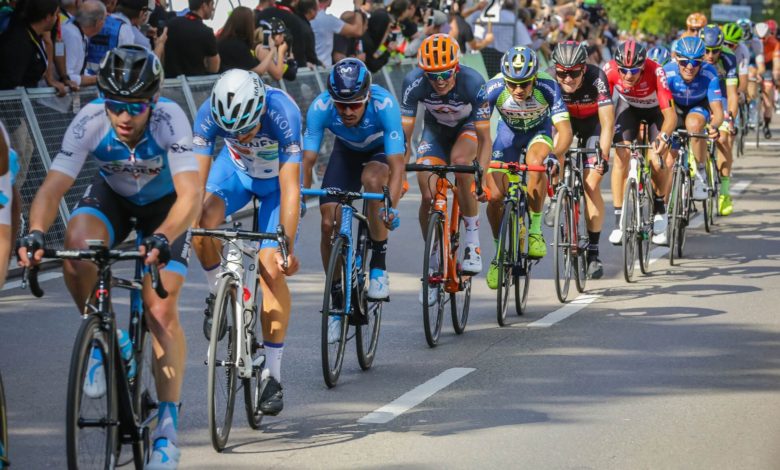What is Social Facilitation?

There is nobody who does not know that we show a higher performance when we see that we are being watched or when others are present in any business we do in daily life. Social facilitation is a phenomenon seen not only in the human world but also in creatures with social life forms such as ants. Social facilitation effect refers to one of the human behaviors that we encounter quite and frequently in daily life in social psychology. The term “social facilitation” in the literature in English is the opposite of the social loafing behavior called the “Ringelmann effect”.
The social facilitation effect was first brought up by the American Psychologist Norman Triolett. Triplett found that in a study he conducted on cyclists in 1898, racers increased their performance much more than normal at the points watched by the audience. Triplet then conducted a spool winding test involving children in an experimental setting. As a result of this test, he observes that their performance while doing the same job together is doing the job in question with a much higher performance compared to their own.
After Triplett, many more people study the social facilitation effect and it is revealed that this effect has a very complex form. The Social Facilitation effect basically refers to the combination of two effects. The audience effect and the interaction / coaction effect. In the effect of the audience, the event indicates that the person is reflecting the work he / she is performing to his / her behavior in a completely different way, depending on the situation when there are and without observers. Our performance shows a direct increase when there are people watching and therefore evaluating us in the environment. Audience influence refers to situations in which our work is effectively influenced by implications or different judgments, not the neutral presence of others in the environment in which we are doing. There are two reasons for the behavioral change that occurs in the audience influence: Our performance is being measured / evaluated, our effort to prove ourselves.
The interaction or joint action effect is the most striking part of the social facilitation effect. The expression “wedding feast with hands” is very useful in explaining this effect. The situation expressed in the interaction effect is this: when we perform any action alone with a much lower performance and effort, when we perform it in a group, we show a much more distinctive effort and performance. This must be the secret of the selection of cyclists in the observation made by Tirplett, because bicycle racing has an activity flow in which each participant improves performance compared to the other.
After Norman Triplett, there are important names that contributed to this effect with their work on the social facilitation effect:
The first of these names is Floyd Allport. Although Triolett was the first to propose the effect of social facilitation, Allport was the first to use the term “social facilitation.” Allport conducted many experiments on the social facilitation effect in 1924. The overall result from Allport’s experiments was largely the same. ” He performed better when people doing similar work together and under spectator observation compared to those who were alone.
The second important name dealing with the social facilitation effect is Roberet Zajonc. Zajonc introduced “social inhibition” (Social Inhibition), which is another aspect of social facilitation. In his experiments in 1956, he showed that the social facilitation effect was developed only with hard practice, resulting in a positive performance increase in simple jobs at the familiar mastery level. If the work being done does not have a master level practice, that is, it is done for the first time and has a complex structure, the audience influence and interaction / joint action cause the person to make more mistakes. Zajonc expressed this as social inhibition. After much experimentation, Zajonc put forward the “activation theory”, taking into account the new dimensions of social facilitation theory. While doing business with this theory, Zajonc was the first scientist to emphasize both performance enhancement and reduction in other people’s presence. In summary, Zajonc emphasizes the importance of the nature of the job while determining the environment of a job to be done. If the job is simple and has the quality of having reached a certain level by doing it before, it would be more appropriate to do this work and to have it done as a group in a joint action in order to achieve higher efficiency. However, if the work being done is not sufficiently experienced by the person who will do it, the presence of the audience may cause low productivity or possible accident risks in terms of the work done.
After Zajonc, many theories that explain this effect or express its different dimensions have been proposed with the studies on the social facilitation effect. The wakefulness theory, the hypothesis tracking theory, the difficulty and threat hypothesis, the distraction hypothesis… are the main ones.
What is the Significance of the Social Facilitation Effect?
The success, happiness or failure and unhappiness of a human being as a social creature often lie significantly in his socio-psychological relationships. It is very important for professional human relations to know an extremely effective rule from business life to education, to all kinds of public relations practices and to make decisions accordingly. To make the work done more efficient, to make it easier for people to reach their true potential, to help them overcome the social barriers they encounter, using the data revealed by social facilitation theory will be to follow the path of the mind. Social facilitation is important for understanding human behavior as well as guiding them in decisions and practices in different areas of life.
Perhaps the most important place for the social facilitation effect is education environments. A professional teacher should pay special attention to the learning levels of his students when they are raised to the blackboard. If the student who experiences maximum arousal under the presence of others has the knowledge to transfer, the presence of other students will increase the performance and productivity of the student. However, if the student is not familiar with the subject he is asked to present, then his enthusiasm and current potential will be exposed to social obstacle.





